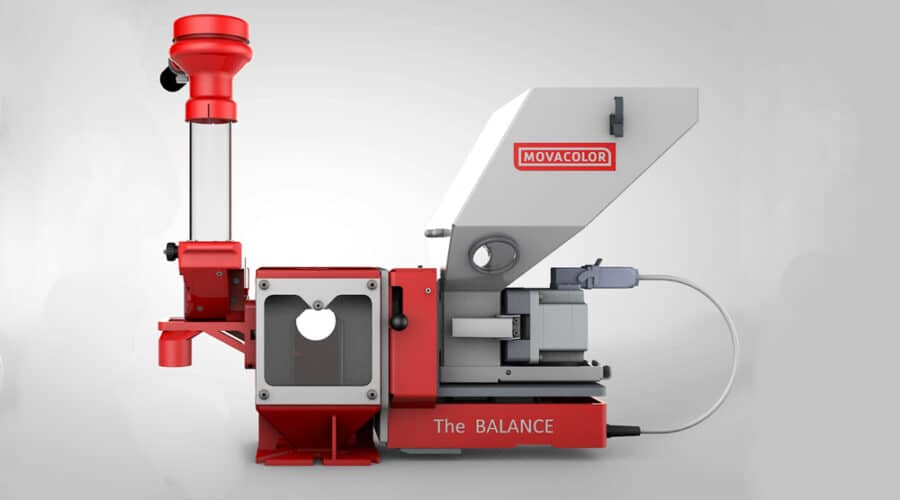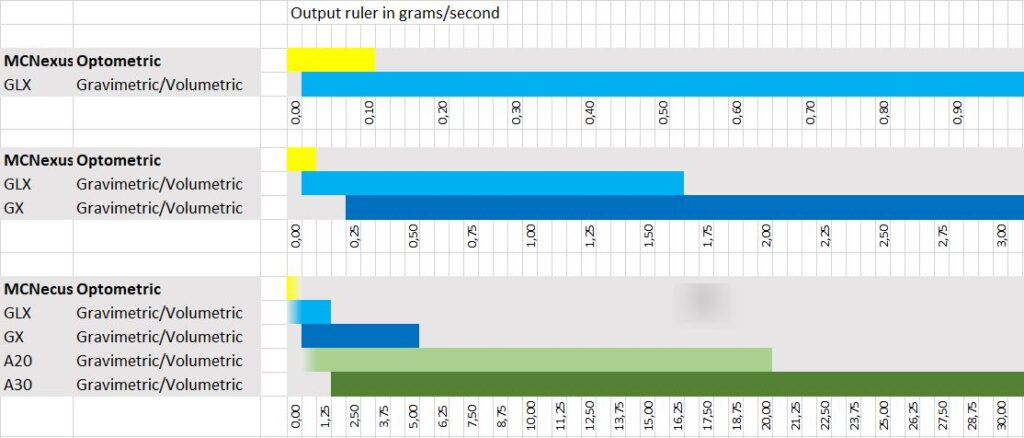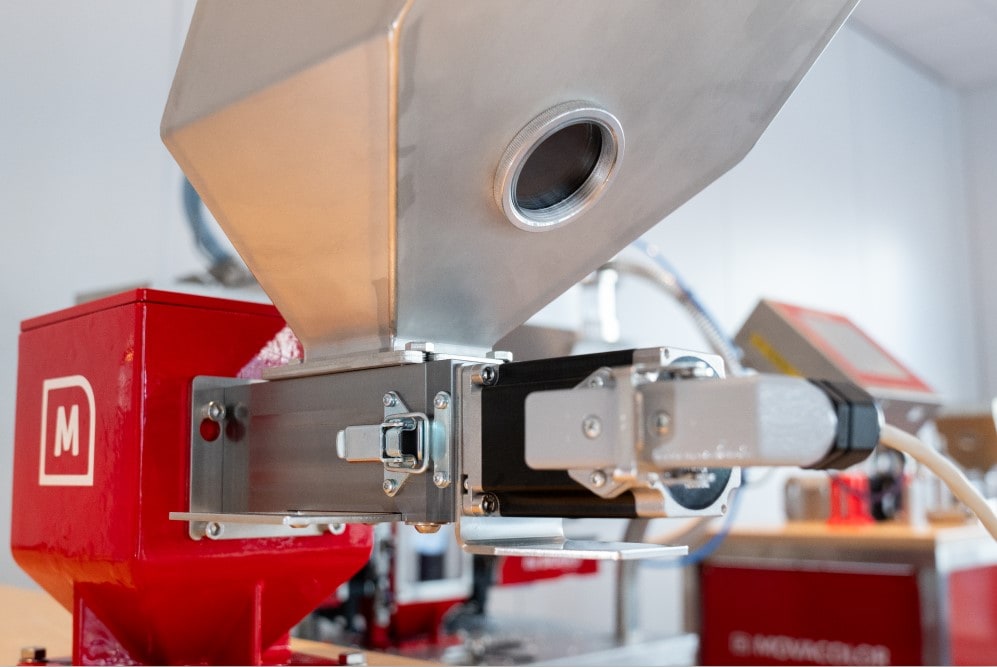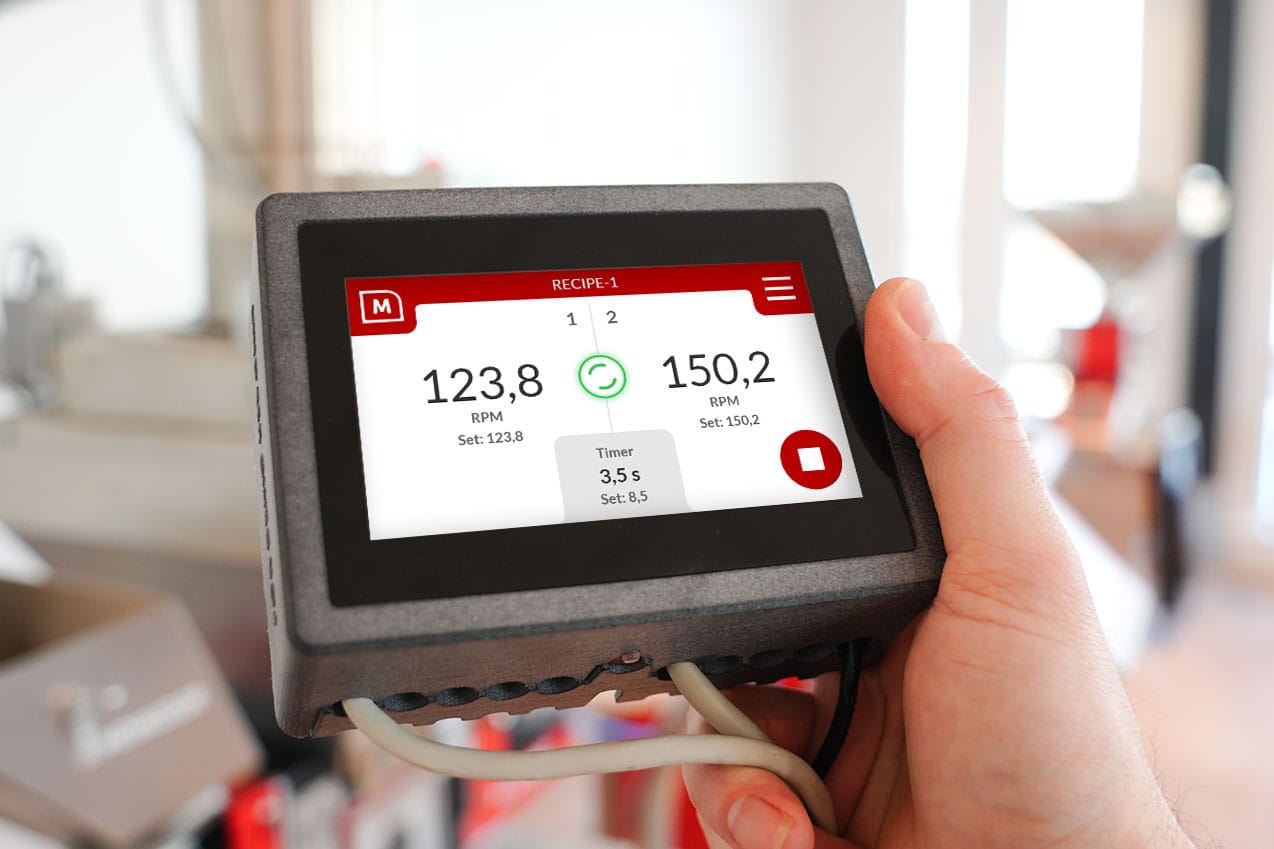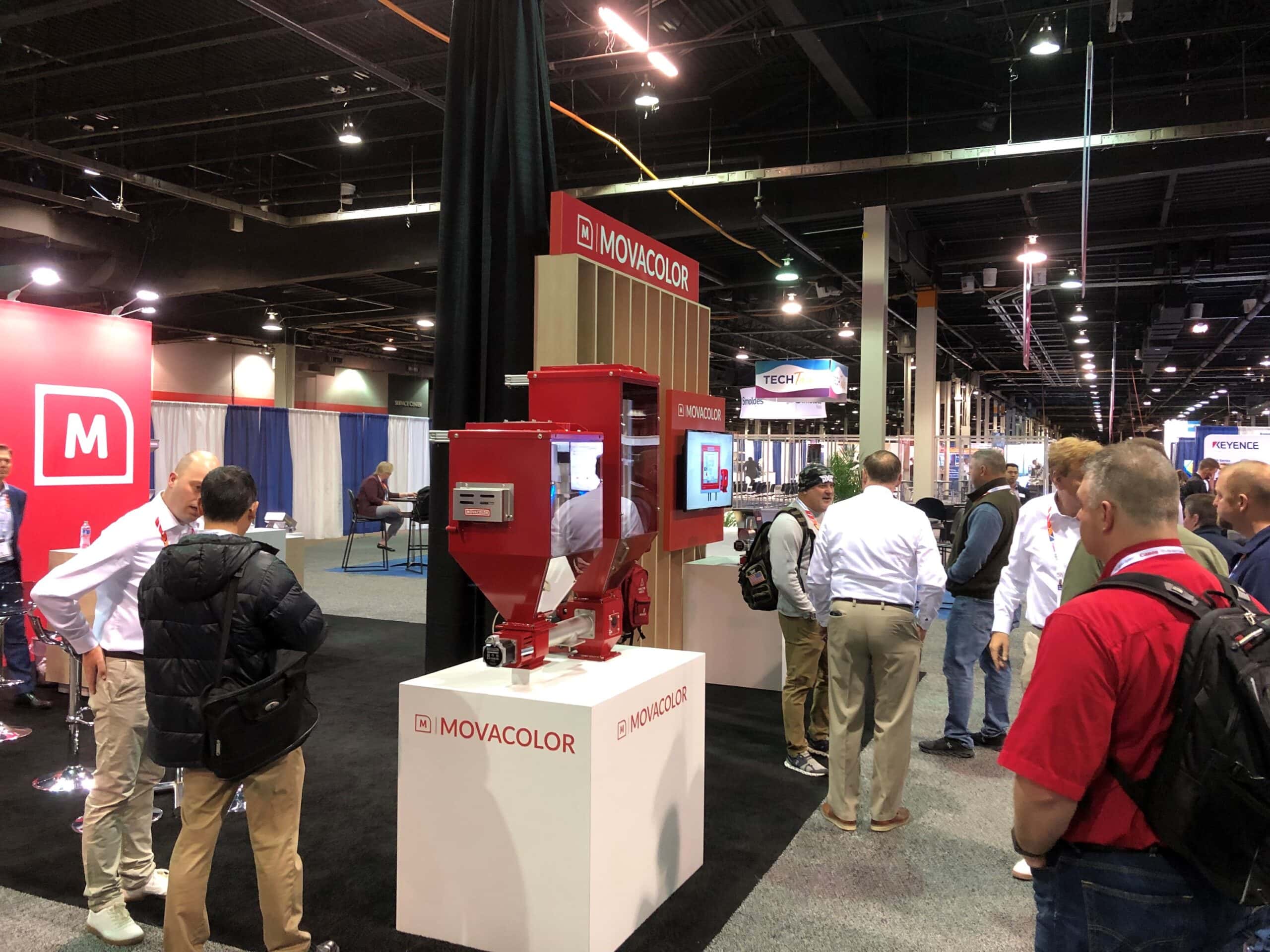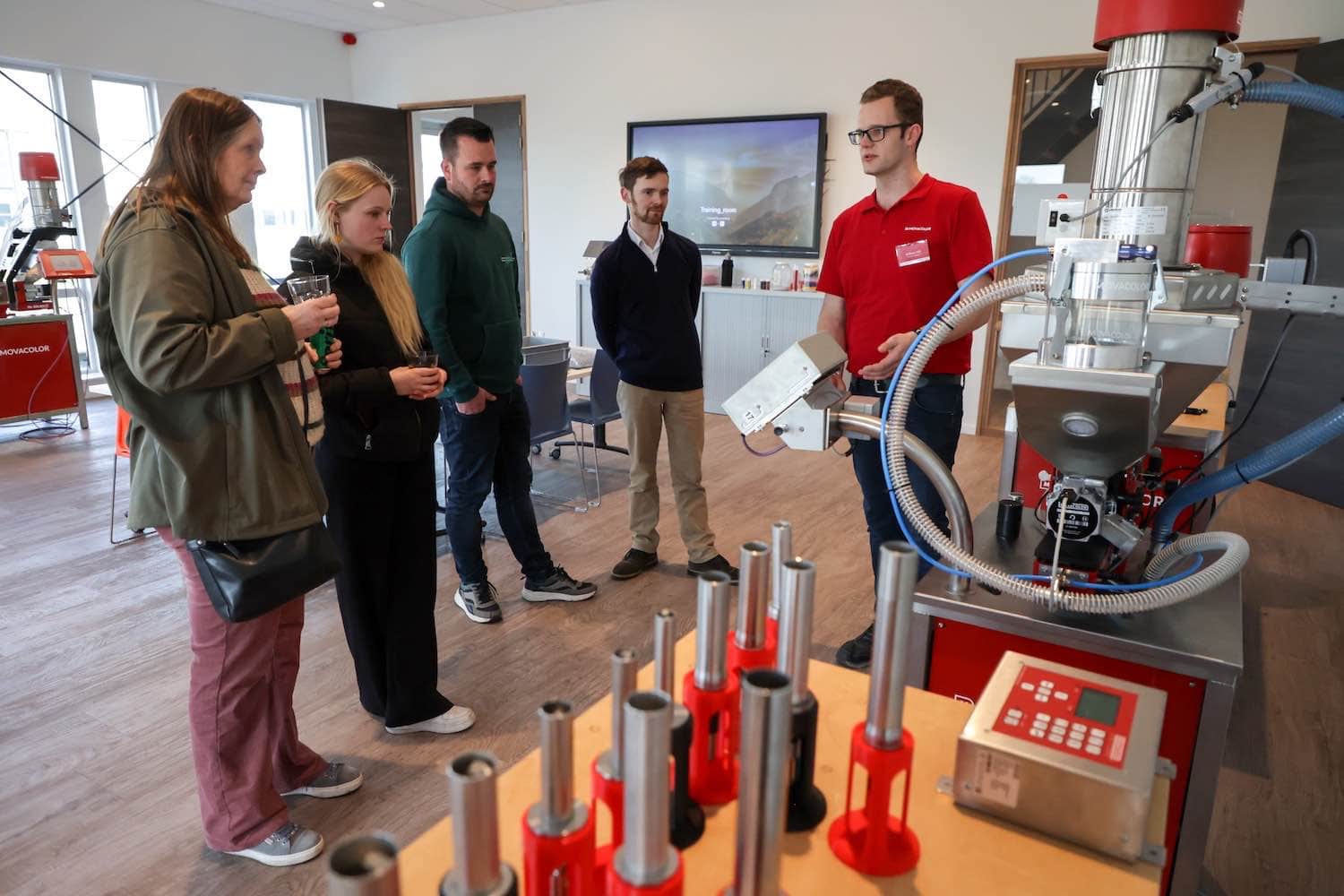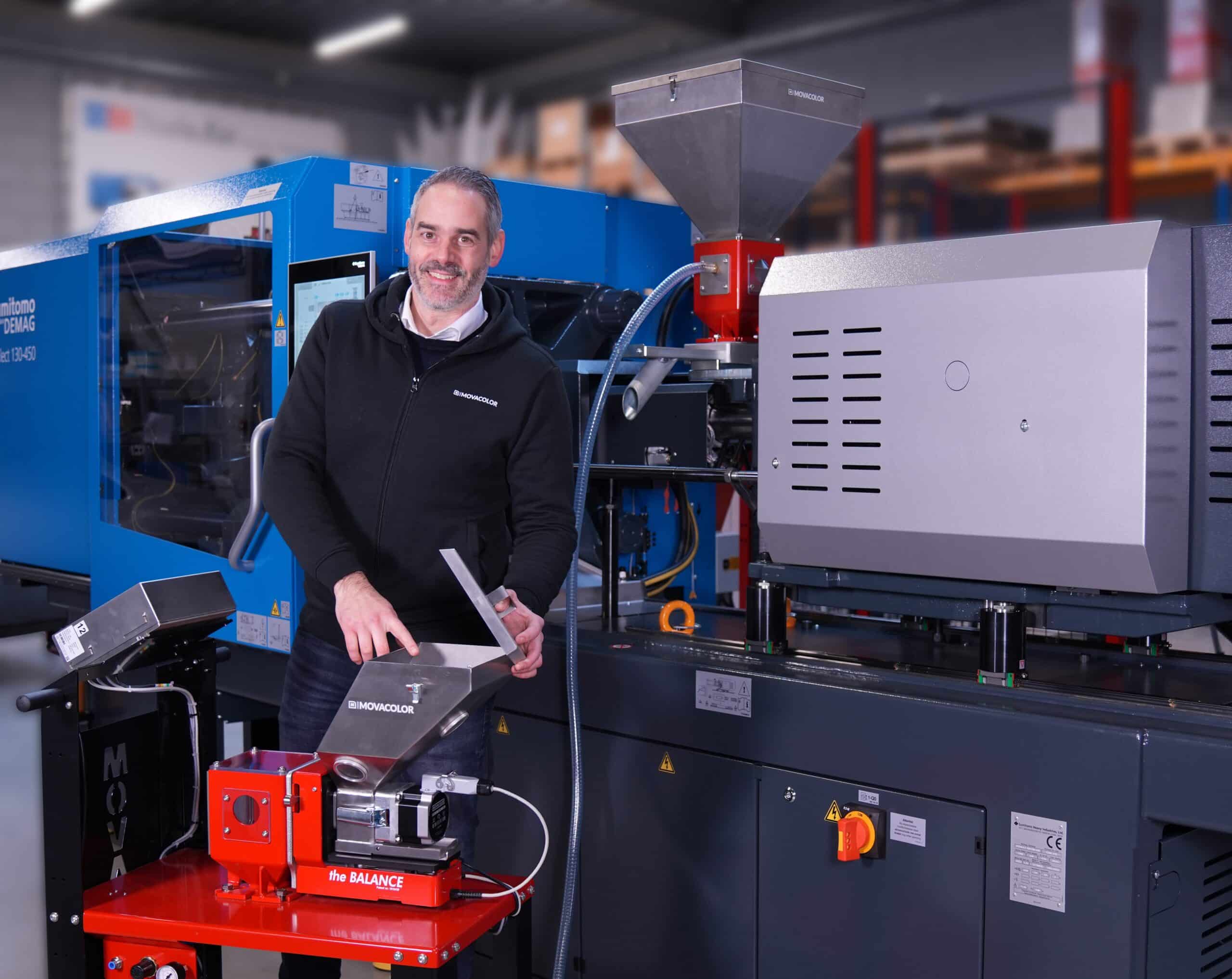Especially when the size of the part to be produced is very small and the mold has only a few cavities. Or one of the additives does not need more than a single pellet per cycle. For those situations current dosing systems available in the market simply do not give the required consistency. Whether this is in color masterbatch or in any other not visible additive but of great significance in the end product. And we must admit: even our highly accurate gravimetric dosing system MCBalance, which is the highest standard in gravimetric dosing, cannot dose pellet by pellet.
So, in practice, when you recognize yourself in one of the above situations, you often fall back on manually mixing with all the associated disadvantages. As a leader in dosing technology, we have therefore challenged ourselves to come up with a solution for this complex dosing issue. Might be you have already been looking for new solutions in the volumetric and gravimetric dosing equipment market, but have you ever thought or heard about the term “optometric dosing technology”?
Optometric dosing technology: what is it?
When it comes to dosing additives with an accuracy of one single pellet, both volumetric and gravimetric systems are not suitable. This is because volumetric systems do not measure anything and therefore simply do not know how many pellets it is dosing during a cycle. Gravimetric systems on the contrary do measure exactly the amount dosed per cycle but this is based on the loss-in-weight principle, and not downsized to the level of pellet-by-pellet detection.
So, there is a natural “gap” between dosing nothing and dosing the lowest measurable amount based on loss-in-weight technology. Wouldn’t it be genius to have a system that could actually ‘see’ one single pellet and by that can close that gap? In 2018 this made us decide to design and build a dosing system that is capable of dosing additives based on number of pellets. It started from scratch and resulted in the introduction of world’s first optometric dosing system called MCNexus. The MCNexus uses an optical sensor to detect a single pellet. And now, more than 3 years after launching it on the market and listening to customer feedback, the MCNexus has dotted the i’s.
Optometric dosing technology: how does it work?
So how does the MCNexus exactly work? The MCNexus is equipped with a rotating disk driven by an accurate stepper motor. This combination picks up single additive pellets in a frequency that you need for your production. The pellets are collected by a vacuum and released from that when they reach the point of dosing. The disk comes in 3 sizes, each of them suitable for a certain range of pellet sizes.
The unit itself is equipped with optic pellet sensors that ensure that dosing frequency is not disturbed. In case such a sensor is detecting an empty hole in the disk (missing pellet), the disk will quickly rotate forward to bring in and release the next coming pellet instead. This optometric measure and control system is extremely fast and repeatable compared to any gravimetric loss in weight system.
